Pacific salmon swim up rivers from the ocean in order to spawn, returning to the exact same stream they originated from. In the Snake River watershed, salmon used to reach central Idaho and Wyoming. With the removal of 4 dams produce minimal electricity, over 500 miles of salmon river habitat could be restored.
Jump to: Films | Podcasts | Articles | Books | Lessons
Films
Free the Snake: Restoring America’s Greatest Salmon River
Categories: Humans & Nature, Short Films, Water
DamNation
Categories: Humans & Nature, Top Picks, Water
Controversy over dams is emotional and heated. Surging rivers are powerful symbols of the wild and central components in their ecosystems. To most environmentalists, dams are the quintessential representation of destroying something wild to promote something artificial, whether it’s irrigating the desert or shipping material goods up rivers. After a century of excessive dam building, the tide is turning and dam removal has begun. DamNation is a visual narrative of the previous, guiding the viewer through the history, social and environmental implications of damming and dam removal.
Life After Water
Categories: Short Films, Water
Life After Water is a nine minute short film depicting the increased stress being placed on farmers in the American West in the wake of increasingly frequent droughts. The film follows Jesus Ramos—an orange farmer in California’s Central Valley—who explains how water shortages threaten his family’s livelihood, food production, and the future of farming alike. Jesus’s family is not alone in this struggle for livelihood, as it is noted that drought-produced problems continue to plague farmers throughout the region. Jesus’s story suggests that it is not just farmers who are under threat, but the livelihood of the entire food-dependent country. As Jesus contemplates a lifestyle without his fields, Life After Water necessitates viewers to contemplate themes of agriculture, water use and food security—and the role of sustainability in conjunction with each.
The Memory of Fish
Categories: Food, Humans & Nature, Short Films, Water
This film introduces the viewer to Dick Goin, a vibrant aging man with a deep reverence for the Elwha River on Washington’s Olympic Peninsula—a body of water that him and his family have personally and professionally relied on since the 1930s. With the river’s salmon population steadily decreasing due to damming, Goin fights to bring back the salmon. Ultimately, The Memory of Fish demonstrates the direct threat being placed on individuals as a result of widespread habitat destruction that stems from modern policy as Goin aims to bring life back to the river that has, in many ways, sustained his own life.
Articles
The Senate Just Passed the Decade’s Biggest Public Lands Package
Categories: Ecology, Humans & Nature, Water
The 662-page measure, which passed 92 to 8, protects 1.3 million acres as wilderness, the nation’s most stringent protection, which prohibits even roads and motorized vehicles. It permanently withdraws more than 370,000 acres of land from mining around two national parks, including Yellowstone, and permanently authorizes a program to spend offshore-drilling revenue on conservation efforts.
The legislation establishes four new monuments, including the Mississippi home of civil rights activists Medgar and Myrlie Evers and the Mill Springs Battlefield in Kentucky, home to the decisive first Union victory in the Civil War.
The measure also expands the boundaries of more than a half-dozen national parks and adds three units, including two Civil War sites in Kentucky, the Mill Springs Battlefield and Camp Nelson. The package adds acreage to Death Valley and Joshua Tree national parks while protecting 350,000 acres of public lands between Mojave National Preserve and Death Valley, increasing the connectivity of the three sites.
The public lands package would also protect nearly 620 miles of rivers across seven states from damming and other development, often delegating management of the waterways to local authorities. It includes safeguards for a variety of rivers — everywhere from the tributaries for the wild Rogue River in Oregon, known for its vibrant salmon populations, to the once heavily polluted Nashua River that flows from Massachusetts to New Hampshire and is popular with kayakers.
The Water Wars of Arizona
Categories: Water
“With less rain and snow reaching the desert floor, overpumping has rendered a semi-renewable resource finite, touching off the kind of resource war perhaps more familiar to coal camps and oil boomtowns. Hydrogeologists use the phrase “groundwater mining” to describe situations in which the rate of water withdrawal exceeds the rate of replenishment. For some, the metaphor offers a stark lesson. “If we know we’re mining the water, let’s just say it,” said Richard Searle, when I visited at his ranch outside Willcox. At 63, Searle still cuts a frontiersman’s profile; a cutting-horse competitor and former bank manager, he is descended from a prominent ranching family and formerly served as county supervisor. Part of the reason groundwater mining in the valley hadn’t forced a reckoning earlier, he said, was that water was ubiquitous to the point of being invisible. Local farmers were never required to put meters on their wells, he pointed out, which meant that nobody knew exactly how much water was being pumped, much less how much was left. “Long term, people say we should search for a solution,” he said, “but they don’t want to be the ones to suffer.””
The $3 Billion Plan to Turn Hoover Dam Into a Giant Battery
Categories: Energy, Water
‘“Hoover Dam is ideal for this,” said Kelly Sanders, an assistant professor of civil and environmental engineering at the University of Southern California. “It’s a gigantic plant. We don’t have anything on the horizon as far as batteries of that magnitude.”
Sri Narayan, a chemistry professor at the university, said his studies of lithium-ion batteries showed that they simply weren’t ready to store the loads needed to manage all of the wind and solar power coming online.
“With lithium-ion batteries, you have durability issues,” Mr. Narayan said. “If they last five to 10 years, that would be a stretch, especially because we expect to use these facilities at full capacity. It has to be 10 times more durable than it is today.”’
Books
Dead Pool: Lake Powell, Global Warming, and the Future of Water in the West
Categories: Climate Change, Water
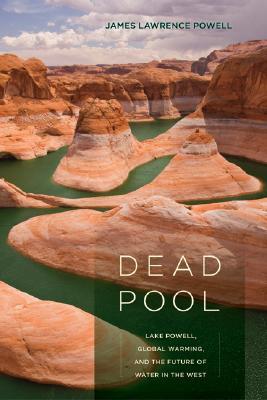
“…In only seventeen years, two major and opposite crises on the Colorado River threatened the Southwest. First came the flood, then came the drought. Both caught even the experts by surprise, revealing that in deciding to store twenty trillion gallons of Colorado River water behind concrete arch dams, then allowing a civilization to become dependent on that water, we did not know what we were doing. We gambled and got away with it—for now. But Nature is an implacable opponent, with unlimited time and energy. Keep rolling the dice with her, and eventually you will lose.”
Powell investigates the past, present, and future of American Southwest Anglo settlement through the lens of dams, using the Lake Powell reservoir straddling Arizona and Utah as a case study. He explains how the interests of the Bureau of Reclamation, developers, and landowners influenced the building of the dams got us to where we are today: huge desert agro-industrial farms sucking up a majority of the water and supercities like LA, Las Vegas, and Phoenix guzzling the rest, while reservoirs threaten to drop to “dead pool” levels: so low they can’t even spin the turbines used to generate hydroelectricity. A cautionary tale about water management and bribe-induced governmental decision-making.
The Great Thirst: Californians and Water: A History
Categories: Humans & Nature, Water
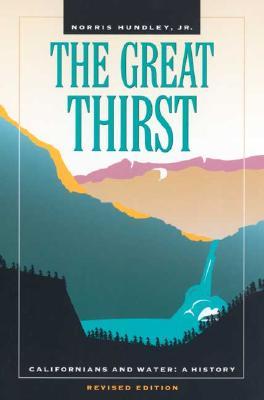
“[The Spanish and Mexican] attitude toward water changed after the discovery of gold, when thousands poured into California imbued with a spirited individualism and an appetite for a profit that elevated the exploitation of nature to new heights, set the stage for a system of private monopolization of land and water that has persisted into modern times, transformed political and legal institutions, and prompted California’s emergence as the nation’s preeminent water seeker—or, to be more precise and as emphasized in this account, California’s emergence as a collection of water seekers.”
Hundley untangles the dense, confusing knot of California’s water propertization, regulatory systems, and their underlying values to form a coherent, comprehensive history (1770’s-1990’s) tracing the management and use of water by, and accompanying interests of, aboriginal Americans, hispanic settlers, Gold Rush settlers, and contemporary “water seekers.” From the publisher: “The desire to use, profit from, manipulate, and control water drives the people and events in this fascinating narrative until, by the end of the twentieth century, a large, colorful cast of characters and communities has wheeled and dealed, built, diverted, and connived its way to an entirely different statewide waterscape.”
A River Lost: The Life and Death of the Columbia
Categories: Humans & Nature, Water
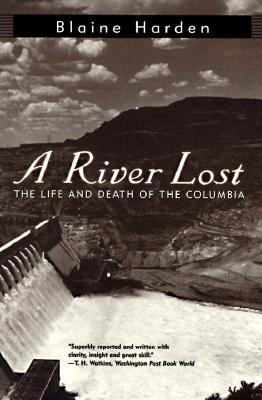
“This book is about the destruction of the great river of the West by well-intentioned Americans whose lives embodied a pernicious contradiction. They prided themselves on self-reliance, yet depended on subsidies. They distrusted the federal government, yet allowed it to do as it pleased with the river and the land through which it flowed. As long as there was federal money, they did not mind that farmers wasted water, that dams pushed salmon to extinction, or that plutonium workers recklessly spilled radioactive gunk beside the river…..My story of the river is a memoir, a history, and a lament for a splendid corner of the American West that maimed itself for the sake of prosperity and that continues not to understand why.”
The Columbia river in the American West has been dammed and polluted to death, reduced to a piece of computer-controlled power-generating machinery, while the people and animals that lived off and in it were denied access or decimated. All that’s left of the Columbia is “puddled remains,” history, and memories, which Harden recounts as he travels along the scene, and victim, of crime. Harden laments not only both the death of the wild river but also the death of the conscience of the American public, who did not hold federal government and farming, electricity, shipping, timber, and nuclear industries accountable for exploiting the Columbia. It’s noteworthy that Harden does a great job talking to people with various interests and stakes in the Columbia and understanding where they (or their industry) is coming from, thus avoiding dehumanizing them or perpetuating a battleground narrative.
Mayordomo: Chronicle of an Acequia in Northern New Mexico
Categories: Culture, Water
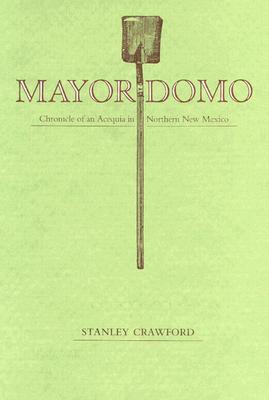
“No, by becoming mayordomo you do not become the Man, even if you are a gringo. You become something quite opposite. You become even more involved and entwined. Next to blood relationships, which rule the valley, come water relationships. The arteries of ditches and bloodlines cut across each other in patterns of astounding complexity…You can argue that the character of a man or woman can be as much formed by genetic and cultural material as by the location of their garden or chile patch along the length of a ditch, toward the beginning where water is plentiful or at the tail end where it will always be fitful and scarce.”
Crawford recounts his experiences in the role of a mayordomo, who is responsible for overseeing the maintenance and fair use of the acequia, a community-run canal/irrigation ditch that is the lifeline of his community’s agricultural livelihood in northern New Mexico. Crawford aims for depth, not breadth, documenting the slow, dry rhythms of farming life in a hispanic community managing their water by traditional Spanish law and how such management ties the community closer together.
Water Wars: Drought, Flood, and the Politics of Thirst
Categories: Water
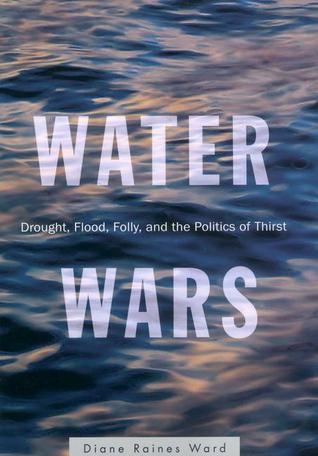
“Right now a gallon of drinking water in my city costs more than a gallon of gas.”
“Our whole society was built on the notion that we could and must control nature, that we must master our circumstances, technologically,” environmentalist Roland Clement said to me not long ago. “But natural systems are the consequence of a long evolution, and ecology is teaching us that we must first understand these systems to see how far we may modify them for our benefit without disastrous consequences. This is a new point of view that arose with ecological science, that world systems have a functional reality of their own and that if we push them too far, the systems will either break down or backfire.”
Using case studies of water issues in the Fertile Crescent to the coasts of the Netherlands to Bangladesh and various other flashpoints across the world, Ward helps readers understand the forces that have brought us to the brink of a global water supply crisis and what solutions have been and are being carried out presently (both successful and non-) to prevent future water wars.
Bottlemania: Big Business, Local Springs, and the Battle Over America’s Drinking Water
Categories: Water
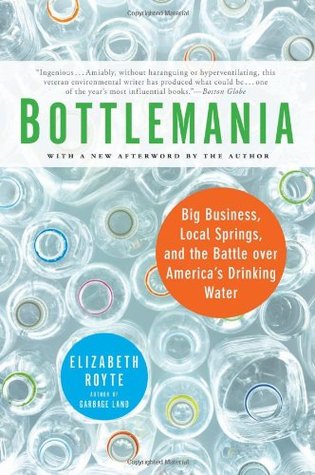
“[The water] filtering process mimics, in a supercondensed time frame, the purifying processes of nature. It’s the same ecosystem service provided for free in such places as Fryeburg, Maine, by glacier-made beds of sand and gravel.”
“If we believe water is a basic human right—such as freedom from persecution or equality before the law—then why would we let anyone slap a bar code on it?”
Royte uncovers the hidden machinery of economics, cultural trends, industries, and people behind one of today’s largest commercial phenomena: bottled water. She investigates how and why water became a saleable commodity in America and the implications of the industry’s waste.
Cadillac Desert: The American West and Its Disappearing Water
Categories: Water
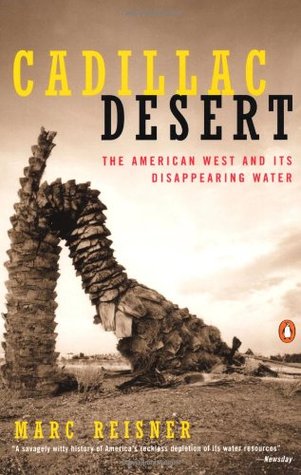
“In the West, it is said, water flows uphill toward money. And it literally does, as it leaps three thousand feet across the Tehachapi Mountains in gigantic siphons to slake the thirst of Los Angeles, as it is shoved a thousand feet out of Colorado River canyons to water Phoenix and Palm Springs and the irrigated lands around them.”
Reisner traces the political, economic, and environmental history of water development and use in the American West. He exposes the people and agencies responsible for unsound and unsustainable water policies and resource development, a slippery foundation our seemingly “Edenic” American western civilization was built on and rests on even today.
The Big Thirst
Categories: Water
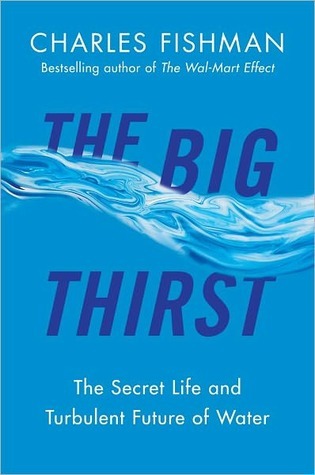
“Our water problems are real. Our approach to water must change, and we’ll be happier if we realize that, and handle the change with creativity and forethought rather than confront it as a crisis. It’s water we’re talking about, so there will be no avoiding the change. What we can choose is the time and the approach and the level of panic.”
“When conflict over water arises, typically, it’s not about the water itself, but about the role the water is playing, the use it’s being put to, who gets it and who doesn’t, and what condition the water is in when all is said and done.”
Fishman argues that whether we will avert or become embroiled in a water scarcity crisis is related more closely to our understanding, connection, and use of water—its management and economics—than its actual availability. Using Las Vegas, Australia, and India as case studies, Fishman highlights the pervasive significance of water in our lives and informs the reader of the social, economic, and technological solutions for better water distribution that are out there.
The Secret Knowledge of Water: Discovering the Essence of the American Desert
Categories: Water
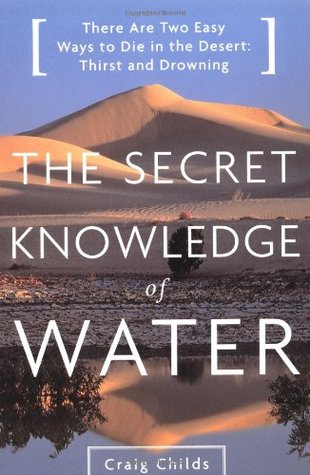
“To say that the desert has no water is a tantalizing misstatement. It is believable. But to look over this raven land and know the truth—that there is immeasurable water tucked and hidden and cared for by bowls of rock, by sudden storms, by artwork chiseled hundreds and thousands of years ago—is by far a greater pleasure and mystery than to think of it as dry and senseless as wadded newspaper. It is not only drought that makes this a desert; it is all the water that cannot be seen.”
“Every move this small flood made was original. Every stone came as news. But what impressed me was that it took up residence without deliberation. It immediately knew how to turn behind a boulder, how to run straight down a chute and then wind like a stirred pot below, as if it had been here for a thousand years. It read the world as quickly as it could move.”
Childs takes readers on a journey throughout the deserts and cactus forests of the American Southwest—from the Grand Canyon to the Sonoran Desert and more—in search of that element deserts are seemingly defined in the negative against: water. He seeks in out in the form of creeks, springs, waterholes, thunderstorms, and flash floods, recounting his adventures with insight gleaned from anthropologists, environmental scientists, ranchers, Native American stories, and previous desert explorers and immigrants.